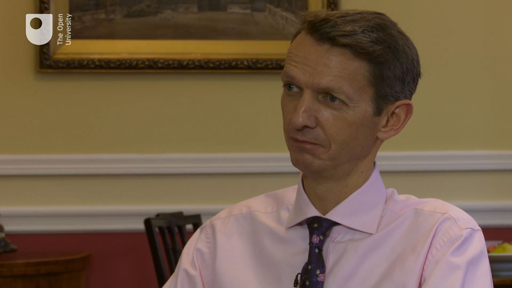6 The role of the Bank of England
To understand what determines the level of interest rates charged when you borrow money, you first need to understand how ‘official’ interest rates are set. In the video Andy Haldane, Chief Economist at the Bank of England, talks about the factors that are taken into account when official interest rates are set. The setting of interest rates is a key facet of monetary policy – and this is used to help manage the economy.

Transcript
Before 1997, ‘official’ interest rates in the UK were decided by the UK government, usually after consultation with the Bank of England. Arrangements changed in May 1997 when the incoming Labour government passed responsibility for monetary policy and the setting of interest rates to the Bank of England to make the bank independent of political influence. This matches the arrangement in the USA and in the ‘euro zone’, where the Federal Reserve Bank and the European Central Bank respectively set official rates.
The rate set by the Monetary Policy Committee (MPC), also known as the ‘Bank Rate’, is the rate at which the Bank of England will lend to the financial institutions. This, in turn, determines the level of bank ‘base rates’ – the minimum level at which the banks will normally lend money. The result is that the Bank Rate (also known as the ‘official rate’) effectively sets the general level of interest rates for the economy as a whole.
The Bank of England’s MPC meets eight times a year to consider policy in the light of economic conditions – in particular the prospects for price inflation (the rate of increase in the price of consumer products like groceries, clothing, household goods and fuel). The MPC’s decision is normally announced at 12 noon on the Thursday of the weeks in which it meets.
The prime objective is for the MPC to set interest rates at a level consistent with keeping price inflation at around 2% p.a. For example, if the MPC believes inflation will go above 2% p.a. it might increase interest rates in order to discourage people from taking on debt – because if people spend less, it could reduce the upward pressure on prices. Conversely, if the MPC believes inflation will be much below 2% p.a. it might lower interest rates (also known as ‘easing monetary policy’), and people might then borrow and spend more.
However, after 2013 this approach to setting Bank Rate was modified to one where the MPC takes greater account of other measures of economic activity like the level of unemployment. The video explores this change of emphasis.
Official rates of interest tend to move in cycles, rising to peaks and then falling to troughs. Since 1989 the trend in the UK has been for the peaks in interest rates to be successively lower. The official rate of interest (or Bank Rate) set by the Bank of England fell to 3.5% in 2003. In 2009 it hit a then record low of 0.5% and was reduced further to 0.25% in August 2016. In 2020 the Bank Rate was reduced to a new historic low of 0.1% as the UK, like other economies, tried to counter the economic impact of the COVID-19 pandemic. From late 2021, Bank Rate started to rise again as the MPC reacted to an increase in price inflation in the UK. In July 2023 the rate stood at 5%.
Note, though, that for individuals the rate paid on debt products will be ‘at a margin’ – sometimes a very high margin – over Bank Rate and bank base rates. In other words, the rate that is actually paid by individuals will be higher.
One other factor to take into account is the difference between price inflation and interest rates – the difference is referred to as the ‘real’ interest rate. When interest rates are higher than price inflation then real interest rates are positive. This is good news for savers who will see the purchasing power of their savings rising. When price inflation exceeds interest rates then real interest rates are negative. This is bad news for savers who will see the purchasing power of their savings falling.
For anyone who is borrowing the reverse applies – positive real interest rates are bad news but negative real interest rates are good news.
Activity 3 Why a historic low?
UK interest rates were at a historic low in 2020. Can you think of any reasons why this was the case? Again, have a go at working out reasons for yourself before you look at the feedback.
Feedback
The chief reason was that price inflation was very low. Interest rates rise when price inflation is high or expected to move much higher.
The other main reason for low interest rates was that the Bank of England believed this would help the economy during the period of uncertainty arising from the UK’s departure from the European Union (‘Brexit’) and during the COVID-19 pandemic.
